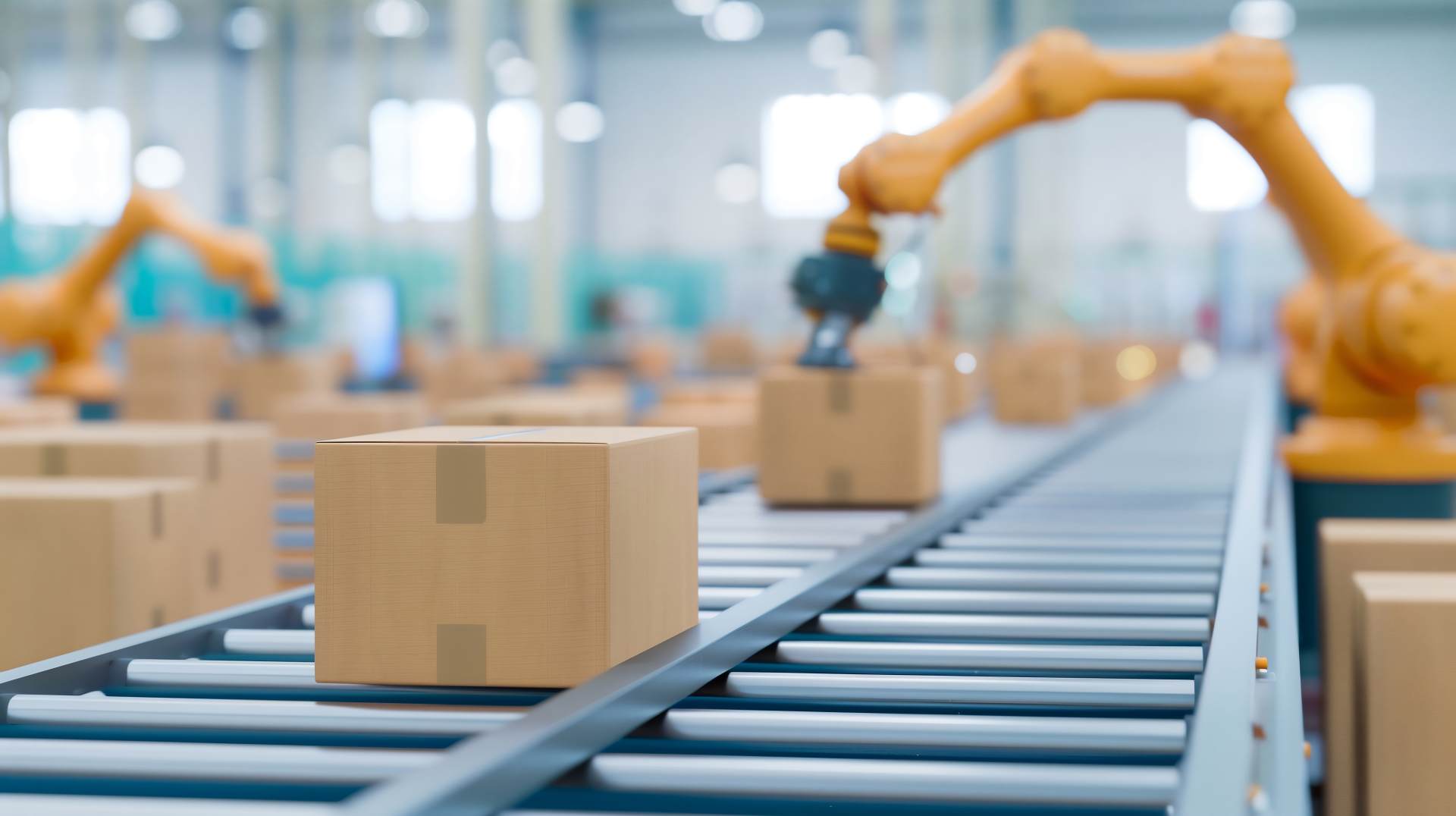Introduction: The Experience Doesn’t End at Checkout
Think about the last time you bought something online. The purchase may have taken a few clicks, but what truly shaped your impression of the brand likely happened afterward: Did your order arrive on time? Was it easy to track? Could you return it without a headache? These moments, which happen after the sale, define the customer experience.
Omnichannel shoppers’ expectations are even higher than those of your average shopper. They expect to be able to choose how to shop and for it to all work successfully regardless of the channel. Businesses can’t support these increasing expectations by operating across fragmented systems or awkward and clunky retail processes. That’s where ERP (Enterprise Resource Planning) systems come into play.
This dives deep into how ERP is quietly but powerfully reshaping the post-purchase experience—creating seamless interactions that keep customers coming back.
Understanding the Post-Purchase Experience in Omnichannel Commerce
The post-purchase experience is more than simply sending a tracking link or delivering a package, it is an important part of the customer journey, where brands can create or destroy loyalty.
In an omnichannel world, a customer sees a product on social, buys it from a website, picks it up at a local store, and then returns it on a mobile app—and this can create a complex web of touchpoints. Ensuring that all of those touchpoints feel connected and safe is a hard task.
Here is what may typically be said to encompass the post-purchase experience:
- Order confirmation: Customers expect engagement from the retailer immediately via email or SMS confirming their order is being processed. Simple, accurate, personalized, and informative would be enough.
- Shipping notifications: Customers expect real-time notifications providing updates on their item location, delivery timeframe, and delivery driver.
- Delivery coordination: Customers expect, if possible, secure answers to rearranging and rescheduling the delivery and potentially even cancelations.
- Returns and exchanges: Ideally painless; customers should return items they purchased online, in-store, and with a refund that is manageable and prompt.
- Customer support: Customers expect help that is quick and informed, as well as empathetic when there are problems.
- Follow up communication: After the delivery is made, the brand should follow up with the customer to get feedback, thank them for their business and reward loyalty. The follow up tasks should never be a pitch to the next sale.
The bottom line is that the post-purchase experience is a key moment of truth for customer satisfaction and requires synchronization with every system and every touchpoint.
Common Post-Purchase Challenges in Omnichannel Retail
Well-meaning companies can find it challenging to carry out a consistent post-purchase experience and even more so if they have multiple channels and disparate systems. Some of the most common obstacles include:
- Inventory mismatches: The wrong information is portrayed on the website which then reflects incorrectly if someone goes to the store or at the warehouse – and results in canceled orders and unhappy customers.
- Shipping delays: If the logistics systems weren’t tightly connected, there can be delays when it comes to processing, fulfillment and shipping.
- Complex returns: If you don’t have a systematic way of processing returns, it becomes a headache for operations and customer relations. Some customers will have different experiences and policies depending on whether they purchased a product online versus in store, or from another type of affiliate.
- Lack of transparency: Customers typically want updates, but high-level or vague updates can often lead to heightened anxiety or frustration. Lack of updates leaves customers with bad experiences and anger and bogs down support teams all at once.
- Siloed data: The friction that occurs when inventory, orders; CRM; and support systems do not talk to each other. A support rep may not even know what the customer ordered.
- Generic communication: Instead of having timely and relevant updates, customers will get generic updates that don’t reflect on their journey to date.
These challenges aren’t just bad operational challenges they create distrust and ultimately jeopardize long-lasting customer relationships.
How ERP Becomes the Backbone of the Post-Purchase Ecosystem
ERP software connects the fundamental processes of a business: all company functions from inventory and order processing to customer data and shipping. Having these processes integrated together can lead to a far more effective post-purchase process that is far easier for the customer as well.
Let’s break down exactly how ERP helps:
Centralized Order Management
ERP systems help integrate your order management system and fulfill orders quickly and accurately rather than working through order management systems like Shopify, Amazon and brick-and-mortar POS all separately. An ERP pulls everything into one dashboard.
Real-Time Inventory Visibility
ERP systems enable real-time visibility to inventory across all warehouses, stores, and channels. This means you’ll never promise what you can’t deliver—and it helps teams move proactively to replenish stock.
Automated Shipping & Fulfillment Integration
ERP systems can communicate with carriers and fulfillment centers directly. That means labels can be printed immediately, parcels can be assigned to the correct warehouse, and tracking can be sent directly to customers—all automatically. No more manual entries. No more waits.
Seamless Returns & Reverse Logistics
Returns can be a painful process. An ERP system can take care of many of the components around returns, with automated return approvals, updates to inventory in real-time, and rule-based refunds to the customer. ERP systems will provide you with data on why items are returned, which is great data to have to eliminate future returns.
Personalized Communication Triggers
Because an ERP system houses customer orders and preferences, it can produce relevant communications: “Your order will be delivered tomorrow,” “We’re here to let you know that there is a delay due to weather,” or “Thank you for your order – here’s 10% off your next order.”
Post-Sale Support Integration
When ERP is integrated with CRM or helpdesk tools, support reps have everything they need in one spot: the order, the timing, & the status. That means no more asking customers to repeat themselves – and much faster resolution.
Benefits for Omnichannel Retailers Using ERP
Let’s take a step back now: how does this ultimately demonstrate measurable value?
- Timeliness and reliability: Automated tasks allow for precision and no delays.
- Happy customers: Accurate updates on orders, with easy returns and the ability to get support when needed.
- Less confusion internally: One source of truth, with all teams using the same data set creates fewer points of confusion.
- Scale and flexibility: Launching a new marketplace or a new store? Your ERP can grow with you.
- Insightful data: You can see what items are most frequently returned, where deliveries can be improved and even what messaging reduces churn.
- Repeat purchase: With seamless experiences following the purchase journey, customers have a greater tendency to repeat— not just once, but multiple times.
Customer Expectations in the Post-Purchase Journey
Nowadays, consumers are discerning. Their expectations have been created by eCommerce behemoths:
- Fast shipping: Same-day or next-day shipping are now customary.
- Transparent updates: Customers expect updates on when their item is out for delivery or if there’s an issue.
- Simple returns: “Return-to-store” or print-free drop-offs are now customary.
- Responsive support: Chatbots fall short; we want real help.
- Personalized engagement: Brands need to remember customer preferences, prior issues, and buying behavior.
It’s difficult to hit these marks consistently – but ERP makes it possible.
Use Case Scenarios: ERP in Action Post-Purchase
Let’s bring this to life with some realistic scenarios:
- Scenario 1: Omnichannel Returns Streamlined
Julia purchased some sneakers on a brand’s website but wanted to return them to the nearest physical store. The ERP enabled fast return processing, she received her refund immediately, and inventory was updated across all systems. - Scenario 2: Delay Addressed Proactively
The warehouse has delayed shipping a customer’s product, but the ERP system flagged it and triggered a personalized email to the customer with a small discount and/or an apology note which results in removing a potential complaint and generating more appreciation. - Scenario 3: Peak Season Induced Pressure
During a Black Friday rush, the ERP system will intelligently route customer orders to the nearest warehouse which offers the fastest turnaround—avoiding any bottleneck in the process and ensures on-time delivery for the customer despite a higher volume.
These examples demonstrate how ERP can provide order wherever there was chaos—and keep customers informed and fulfilled!
The Strategic Impact: Why ERP Is Not Just a Backend Tool Anymore
The traditional view of ERP systems—as accounting tools or inventory trackers—is outdated. In today’s retail environment, ERP is at the heart of customer experience.
It connects teams that served in a silo and helps brands respond in real time. Most importantly, it aligns customers’ expectations of what they see and what they receive.
A well-implemented ERP system is not just about identifying cost saving and reducing errors. ERP is also about:
- Creating trust
- Creating smoothness
- Creating an experience people come back for
And that’s why ERP is no longer a behind the scenes tool. It’s now a frontline contributor to the success of your brand.
How to Choose an ERP That Supports Omnichannel Post-Purchase
ERPs are not created equal, particularly when you talk about the needs of modern, omnichannel businesses. Here’s a summary of what you should focus on:
- Multichannel integration: Your ERP should connect to your website, retail locations, marketplaces and all POS systems.
- Shipping & logistics integration: Look for real-time connections to your carriers and logistics partners.
- Returns management: Look for an ERP that allows you to set your own rules for returns and automate the returns process.
- Visibility into customer data: All your support staff should be able to pull up a full customer history in a couple of clicks.
- User-friendly: Your ERP system is worthless if it is hard to use. Dashboards and workflows should simple and make sense.
Take the time to demo options and talk to vendors about your specific use cases. The right ERP will save you hours of headache—and improve your bottom line.
Final Thoughts: Post-Purchase Is the New Competitive Edge
There are times when people are so focused on the sale that they overlook an aspect of the sale and business that matters just as much—if not more. Brands winning today are not just those that have a great product or clever ads. Brands winning today are the ones that deliver on a seamless, respectful, and responsive post-purchase experience.
ERP systems are the unsung heroes enabling this experience. They ensure your business can deliver on everything with precision, so your customers continue to feel valued when checking out until the package arrives at their door—and beyond.
So when it comes to building lasting loyalty, you should not just care about conversion. You should care about what comes after. Because what is beyond the cart is what stays in your customers minds.
Want to make your post-purchase experience smoother, smarter, and more connected?
Start by looking under the hood. Your ERP might just be the key to turning one-time buyers into lifelong customers.
Take the First Step Towards Transformation
By taking a collaborative approach, Businesses can build a culture of continuous improvement and achieve sustainable operational efficiency without overwhelming your team or disrupting your business.
Don’t let inventory challenges hold your business back. Discover the Versa Cloud ERP advantage today.
Effectively manage your financials, multiple channel inventory, and production workflows with our award-winning ERP.
Let Versa Cloud ERP do the heavy lifting for you.
Do Business on the Move!
Make your businesses hassle-free and cut the heavyweights sign up for the Versa Cloud ERP today!!
Join our Versa Community and be Future-ready with us.









